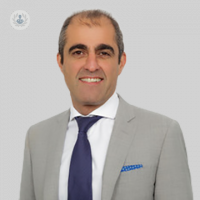How to recognise symptoms of venous thrombotic event (VTE)
Written in association with:Venous thrombotic event (VTE) is an umbrella term used to describe abnormal blood clots in the deep veins of the legs (called a deep vein thrombosis) and/or clots in the lungs (also called a pulmonary embolus). Leading plastic surgeon, Mr Navid Jallali describes the signs and symptoms of a VTE as well as how to reduce the risk of developing a VTE post-operation.

What are deep vein thrombosis (DVT) and pulmonary embolism (PE)?
DVT is an abnormal blood clot in the deep veins of the lower leg or thigh, which usually presents with pain and swelling postoperatively. The DVT can sometimes detach from the veins, travel to the lungs and block the blood vessels in the lungs, which is known as a pulmonary embolus. This can be life-threatening if it is not recognised and treated quickly.
What are the warning signs of venous thromboembolism?
If any of the following symptoms occur, it is important to seek immediate medical help. DVT tends to affect the large veins in the lower leg and normally presents on one side only. The clot blocks blood flow and thus causes:
- Pain, swelling or tenderness in the calf
- Heavy aching in the leg
- Increased heat in the calf area
- Redness of skin at the back of the leg, particularly behind the knee
A pulmonary embolus is fortunately much rarer. However, urgent medical advice should be sought if any of the following symptoms are present:
- Chest pain that is sharp and worsens when taking a deep breath
- Unexplained shortness of breath
- Upper back pain
- Coughing up blood
- Feeling like there is an irregular heartbeat
Who is at risk of developing VTE?
Essentially anyone having surgery is at risk of developing a VTE although certain procedures appear to carry a higher risk. Patients are assessed for their risk of VTE and we institute a postoperative plan in order to reduce this risk. The following groups of patients are particularly at risk and may not be suitable for an operation:
- Patients with a history of blood clots.
- Smokers
- Patients who are overweight
How can the risk of VTE be reduced during surgery?
A risk score assessment is the first step in reducing the likeliness of developing a post-operative VTE. The admitting nurse will calculate your risk score on the day of your surgery and a suitable prophylaxis regime will be commenced following a review by my anaesthetist and I. Maintaining circulation in the legs and avoiding stagnation during surgery can reduce the risk of VTE. Therefore, you will be given TED stockings to wear before you go to the operating room.
You will also have an electronic compression boot (called Flowtron Therapy) applied to your calves whilst on the operating table and this may be continued on the ward postoperatively until you are mobile. You will be encouraged to mobilise as early as possible after surgery and occasionally you may be given a blood thinner in the form of an injection. Despite the above precautions, unfortunately, a VTE may still occur and is by large treatable as long as the symptoms described above are recognised.
More information on VTE can be found here.



